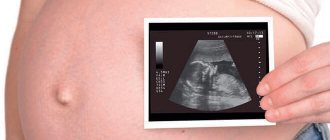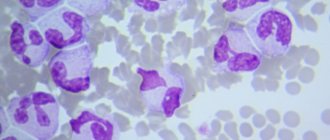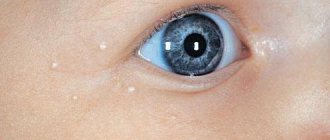Hello, dear friends!
The life of a young mother is filled with surprises. Pleasant ones that the baby himself prepares for us, smiling, taking his first steps and uttering his first word. And not really. Most often, nature presents them in the form of ailments and pathologies. We will talk about one of them today. Hypoxia in a newborn. What it is? In short, this is oxygen starvation. Moreover, it is experienced not only by the brain, but also by the tissues and internal organs of the baby.
This is not a disease, but a specific, often dangerous, phenomenon that you need to know in person. After all, if a mild degree of hypoxia may not have a negative impact on the development of the baby, then severe jokes are bad. It often causes disruption of brain activity, neurological diseases, malfunction of internal organs, and even disability. In advanced cases, death is possible.
What is cerebral hypoxia called?
The deviation, as a result of which the baby suffers from a lack of oxygen, is called cerebral hypoxia. When there is a lack of oxygen, the brain cannot function fully, so the central nervous system and other organs are at risk. In most cases, the pathology appears during gestation.
Hypoxia can be acute or chronic. Difficult childbirth that affects children's health leads to the first type of pathology. During chronic hypoxia, the baby experiences a lack of oxygen for a long time. Oxygen starvation is not a safe deviation, as it entails many complications (one of them is the death of brain cells).
Sometimes children are given a disability because of this disorder.
Recommendations for parents
If a child was born with hypoxia, then mothers and fathers should not immediately panic. In most cases, the baby’s body recovers easily; it only needs help with this. The first months of life are especially important in terms of treatment; if during this period parents devote a lot of time to the health of the baby, then by the year he will practically not lag behind his peers in development. In addition to therapeutic measures, vitamin complexes help to activate reserve self-healing mechanisms. One of the safest and most effective of them is the therapeutic and prophylactic product Doromarin. It contains angustate kelp, marine calcium, extract obtained from sea trepang, and natural juice. The complex has a positive effect on the entire body, and its use during oxygen starvation promotes:
- Improving the transmission of nerve impulses, which has a positive effect on the functioning of the brain;
- Increasing oxygen supply to the brain;
- Normalization of metabolic processes;
- Strengthening the processes of tissue regeneration, including nervous tissue;
- Stabilization of heart function;
- Elimination of seizures;
- Prevention of disorders in the musculoskeletal system;
- Saturation of the body with the most necessary biologically active substances during oxygen starvation.
Doromarine can be given to infants as early as three months. If you start taking the complex at this time, then in later life the severe consequences of hypoxia are unlikely to bother you. Doromarin acts gently, under the influence of the therapeutic and prophylactic product the baby is less capricious, his sleep and appetite improve. The complex of vitamins improves the physical and mental development of the child, has a positive effect on the immune system, and normalizes digestion. Another important property of Doromarine is cleansing the body of toxins and drug residues, which is especially important if the baby received a lot of medications in the first months of life due to hypoxia.
Types of hypoxia in newborns
Both internal and external circumstances can contribute to the formation of hypoxia in infants.
Types of disease:
| Name | Short description |
| Respiratory hypoxia | Occurs as a result of difficulty breathing. The disease is often a side effect of asthma, muscle paralysis, and brain injury. |
| Circulatory hypoxia | Appears in parallel with cardiovascular diseases. There may be impaired blood flow, as a result of which the central nervous system is not saturated with oxygen in the required volume. This leads to a state of shock, which can lead to ischemic stroke. |
| Hypoxic disease | It is observed when the brain does not have enough air from the outside world. |
| Tissue pathology | Occurs when body cells have difficulty absorbing oxygen. Develops with constant contact with dangerous substances (for example, drugs or poisons). |
| Hemic hypoxia | Formed when the body is damaged by gases or toxic substances. |
The consequences of hypoxia in a newborn are severe. Timely treatment will help avoid serious complications. First of all, it is necessary to undergo an examination to detect a specific disease.
Severity of hypoxia
At birth, the baby is assessed according to the degree of functioning of all organs, for which the Apgar scale is used. The general situation in the first minutes after birth and the situation that developed 5 minutes later are recorded.
There are 4 forms of pathology:
- Severe hypoxia (0-3 points): absence of reflexes, including sucking, low blood pressure, depression, excessive lethargy, painful cries, convulsions, a radical change from high to low pulse. It can occur due to entanglement in the umbilical cord, obstruction of the respiratory system, short or long labor, a significant difference between the baby’s head and the mother’s pelvis, due to general diseases.
- Hypoxia of moderate severity (4-5 points): loss of strength, decreased motor activity, convulsions, incomplete paralysis, impaired sucking function.
- Mild disturbance (6-7 points): excessive agitation, restlessness of the child, trembling of the limbs, eyelids and chin, squint.
- Absence of pathology (8-10 points).
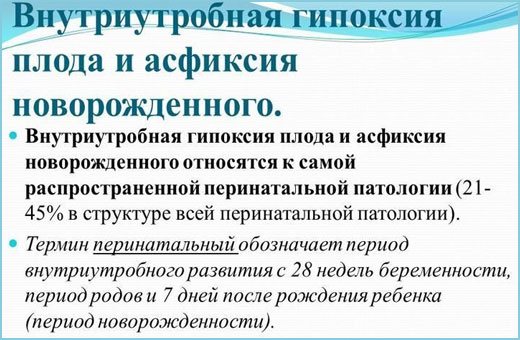
When assessing a newborn, breathing, reflexes, skin color, muscle tone and heart rate are taken into account. Mild hypoxia disappears without outside help within 5 minutes. Moderate hypoxia requires medical intervention.
After taking the medications, the baby's condition stabilizes.
A severe form of the disease requires the child to be urgently sent to intensive care, where appropriate treatment is prescribed.
Here the newborn is under the supervision of specialists.
Treatment of hypoxia after childbirth
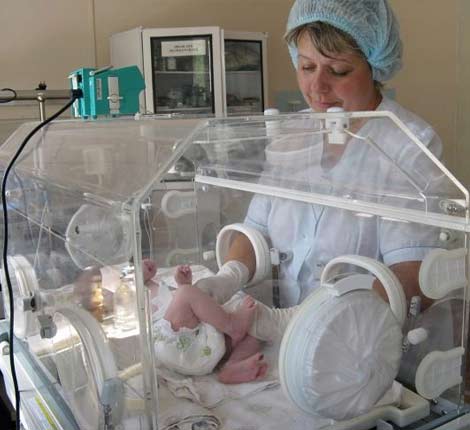
Hypoxia during childbirth has minimal consequences for the child if help is provided professionally. The set of measures to properly eliminate oxygen starvation includes the following measures:
- Restoring the normal functioning of the respiratory system - clearing remaining mucus from the mouth and nasal passages;
- Warming a newborn;
- Administration of drugs that stimulate blood circulation and respiration;
- Oxygen mask. It is used in cases where the above measures did not restore breathing.
In case of severe hypoxia, the baby is placed in a pressure chamber - a device into which oxygen is supplied under pressure. Additionally, the child is given medications that stimulate brain activity, breathing and heart function. Sedatives and medications that normalize metabolic reactions, and anticonvulsants, if necessary, are also needed.
In case of mild pathology, after recovery the baby is discharged home. But the baby must be under the supervision of a neurologist; he is also recommended physical therapy, massage courses, and daily walks.
Children with severe oxygen deprivation first undergo long-term treatment in a perinatal center. Subsequently, they need repeated courses of therapy that include, in addition to medications, physiotherapeutic procedures, and physical therapy. Such children need to create a calm environment at home; aromatherapy and herbal baths with soothing herbs are useful. The baby's condition quickly improves if the parents follow all the doctor's recommendations and feed the baby correctly. Along with nutrition, the baby should receive all the vitamins necessary for the development of the nervous system. Children with hypoxia especially need vitamins from group B, ascorbic acid, vitamin A, and microelements.
How is a violation determined?
Hypoxia is easy to detect immediately after birth.
Its characteristic features are:
- an increase in heart rate, followed by a slowdown in heart function;
- disturbances in the rhythm of heart contractions;
- heart murmurs;
- presence of blood clots;
- pale skin;
- the limbs and nasolabial triangle are particularly blue;
- slow breathing or cessation of breathing;
- there are no reflexes or they are weakly expressed (the baby is powerless or does not move);
- intracranial pressure;
- the baby did not cry after birth;
- presence of green waters.
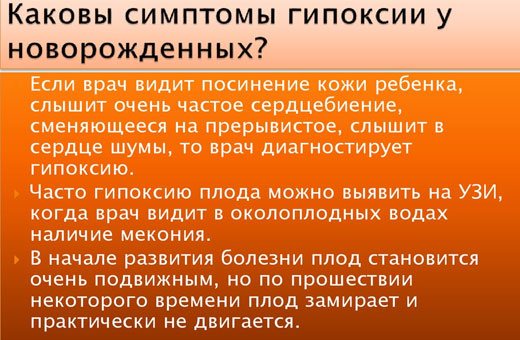
If the disorder is not detected immediately after birth, the child may experience increased drowsiness, moodiness, rapid freezing, flinching when touched, and other disorders. If you detect the first signs of hypoxia, you should immediately consult a doctor for timely diagnosis of the disease.
It is important to know the form of the pathology in order to identify the severity of the problem.
Diagnosis and treatment
In order to make an accurate diagnosis, it is important to undergo an examination. Even during pregnancy, a woman will need to perform an ultrasound of the fetus, a movement test, and also listen to the heartbeat. Based on the results of the research, it will be possible to understand whether there is a threat to the baby.
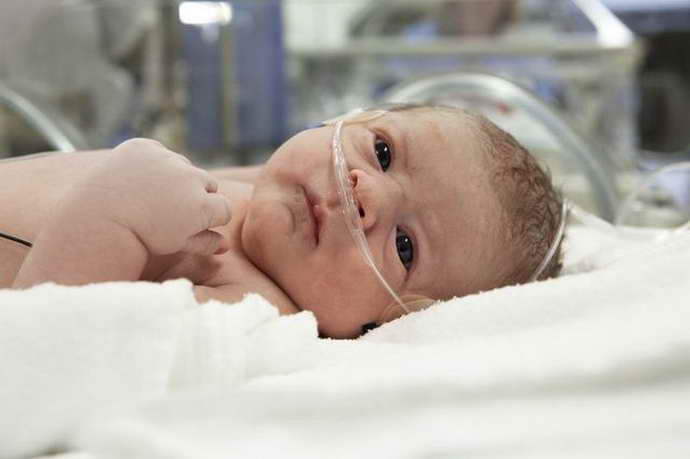
After birth, the baby undergoes an ultrasound of the brain and a neurological examination. If deviations are noticed, then the presence of hypoxia can be suspected.
During treatment, breathing is first restored using aspiration, then artificial ventilation can be used. A solution of glucose and cocorboxylase is injected into the umbilical cord. For bardycardia, a heart massage is performed, and adrenaline and other medications are injected into a vein. After this, the child will need to be given vitamins, undergo infusion treatment, and also undergo oxygen therapy.
What does fetal hypoxia mean for a child in the future?
Brain hypoxia is the most common consequence of lack of oxygen. In most cases, this disorder affects the brain and not other organs. During pregnancy, it is difficult to determine what pathologies will arise as a result of disruption of brain activity. But after birth, it is realistic to assess the trauma caused.
Some pathologies will be noticeable after a considerable time (for example, speech problems), others can be identified in the maternity hospital or at the very beginning of the baby’s life. The consequences of hypoxia in a newborn can have varying degrees of severity: from minor excitability of the child to serious diseases (paresis of various dislocations, cerebral palsy).
If an acute form of hypoxia was observed during childbirth, cerebral hemorrhage, decreased blood supply, and cerebral edema quite often occur.
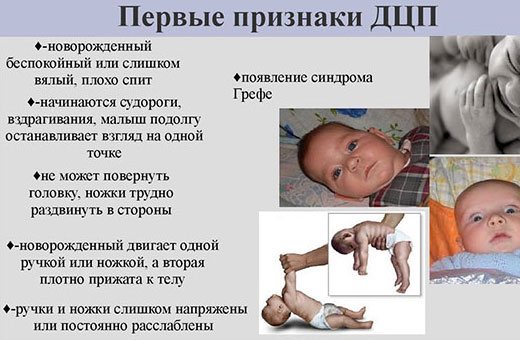
The lesions that appear during such pathologies are irreversible and total. Acute and chronic oxygen starvation can cause various neurological disorders. In the case of prolonged hypoxia, children may experience abnormal or incomplete development of certain human organs, heart or kidney defects.
Children can often outgrow a minor form of the disease by about 7 years of age (provided that the child is registered with a neurologist and follows his recommendations).
Diagnostic measures
Signs of hypoxia in children are detected in the first minutes after birth. The results of the external examination and assessment of the severity of the child’s condition are supplemented by the following studies:
- Blood pH test. When there is a lack of oxygen in the newborn’s body, acidosis occurs (a shift in the acid-base balance of the blood to the acidic side). With mild and moderate asphyxia, the pH of the umbilical cord blood reaches 7.11-7.19 (the norm is 7.22-7.36), and the deficiency of buffer bases (deviation from the normal concentration of alkalizing substances) is 13-18 mmol/l. In severe oxygen deficiency, the blood pH is less than 7.1 and the base deficiency is more than 19 mmol/L.
- Neurological examination of the newborn. During the examination, the child's reflexes, spontaneous movements and behavior, his posture, position and level of physical development are assessed. With oxygen starvation, the child experiences increased neuro-reflex excitability, but there are no symptoms of focal brain damage. With severe hypoxia, the functions of the central nervous system are inhibited.
- Ultrasound of the brain. Ultrasound diagnostics makes it possible to differentiate hypoxic disorders and traumatic brain lesions that arose as a result of birth trauma (subarachnoid, intraventricular hematomas, etc.).
Important information: How to treat arteriovenous malformation of cerebral vessels and symptoms of arteriovenous
Suspicion of intrauterine fetal hypoxia may arise from a sharp change in motor activity (increased movements or a decrease in their frequency after a period of increased activity).
To diagnose prenatal oxygen deficiency, the following studies are performed:
- Auscultation of the fetal heartbeat. Listening to the heartbeat with a stethoscope allows you to evaluate the frequency and rhythm of heart beats, determine the sonority of tones, and identify the presence of murmurs. Lack of oxygen is manifested by tachycardia (increased heart rate) and decreased severity of heart sounds.
- Cardiotocography. CTG is performed to determine the fetal heart rate over time. Assessment of the fetal condition using tocography most often coincides with the Apgar score, so CTG is used to monitor hypoxia and calculate the optimal time for delivery. Signs of hypoxia are a total cardiotocography score of less than 8, a fetal condition score of more than 1, and a decrease in heart rate (less than 110 beats/min at rest, less than 130 beats/min during physical activity).
- Ultrasound of the fetus with Doppler sonography. Ultrasound allows you to establish fetal hypotrophy, which is characteristic of prolonged oxygen starvation, as well as polyhydramnios and oligohydramnios. Dopplerography determines the intensity and nature of blood flow in the placenta, umbilical cord and uterine arteries. The identified growth retardation and deterioration of its blood supply are diagnostic signs of hypoxia.
- Amnioscopy and amniotic fluid sample. Amnioscopy involves examining the lower part of the membranes to determine the presenting part of the fetus and the abnormal amount of amniotic fluid. Amniocentesis (sampling) through the canal of the uterine cervix allows you to determine the color and transparency of the fetal fluid, the presence and nature of inclusions, acidity and other indicators. The presence of meconium and a green tint of amniotic fluid indicates hypoxia in the child.
- Cordocentesis with determination of cord blood pH. Cordocentesis allows you to determine the composition and acid-base balance of blood taken from the umbilical cord. The examination is carried out through the abdominal wall under the control of an ultrasound machine.
Chronic fetal hypoxia
Hypoxic syndrome is the main symptom of chronic lack of air. In this condition, the speed of blood circulation increases, the viscosity of the blood decreases, resulting in damage to the brain.
Symptoms
Hypoxia negatively affects the child’s brain, which is accompanied by the following symptoms:
- bad feeling;
- heart rhythm disturbance;
- muscle spasms (cramps);
- sleep disturbance;
- vomiting, nausea;
- problems with vision and hearing;
- lethargy;
- clumsiness;
- uncontrolled urination and bowel movements;
- dizziness;
- cardiopalmus.
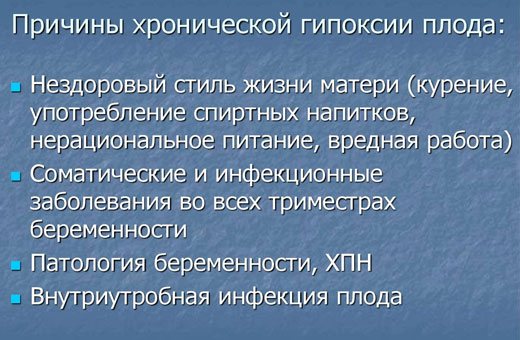
Seizures usually begin with twitching of the muscles of the face and limbs. After some time, a convulsive posture may be observed with the head thrown back and the back arched in the shape of an arc. This pose is reminiscent of an exercise called a “bridge.”
How to diagnose pathology
If oxygen starvation is detected before the birth of the child, then treatment will be effective.
A pregnant woman must undergo a comprehensive examination, consisting of:
- ultrasound examination of the fetus;
- cardiotocography;
- a test that detects embryo movements;
- listening to a child's heart using a stethoscope.
Ultrasound results allow you to monitor the general condition of the fetus, determine the volume of amniotic fluid, and also study the baby’s organs. Using this method, the doctor determines whether the child is safe or whether there will be health problems. CHT and listening to the heart will help determine if the fetal heartbeat is abnormal.
How to independently determine deviations in the development of a baby in the first weeks of his life:
The main sign of hypoxia is an excess of generally accepted standards of heart rate: 160-170 beats per minute.
Treatment options
Treatment of oxygen starvation in infants depends on how severe its symptoms are, how long it was in conditions of lack of air, and which organs are affected. Hypoxia in infants is highly treatable. But the duration of the lack of air directly affects the severity of the deviations.
Cerebral palsy is often a consequence of oxygen deprivation. Delayed psychomotor development in newborns may also occur. But this disease is easy to cure. If a lack of oxygen is detected during childbirth, treatment will begin with restoring breathing. The baby may end up in intensive care.
If prenatal hypoxia is detected, delivery by cesarean section is possible.
Lack of oxygen can be treated with medications, as well as with massage . Children suffering from this disease should be registered with a neurologist. Medicines may be prescribed to reduce intracranial pressure and improve blood supply to the brain and blood flow in the body.

To normalize muscle tone, massages, therapeutic exercises, and water treatments are prescribed. By adhering to the correct methods of treating hypoxia, by the age of one and a half years the child can completely get rid of this pathology.
Consequences
The consequences of hypoxia in a newborn most often negatively affect the child’s brain. It is responsible for the normal functioning of the entire body. The consequences of oxygen starvation can manifest themselves in the most unexpected forms.
If the umbilical cord is damaged and the child cannot breathe on his own during childbirth, this indicates that the baby’s body stops receiving blood, blood pressure drops, and venous pressure becomes higher. The baby's blood supply decreases, swelling and accumulations of spilled blood appear in the tissues and cavities of the body.
Sometimes there are seizures and vision problems.
Cerebral palsy is one of the most serious consequences of hypoxia. The birth of a huge number of children with this disease is attributed to the regular use of drugs that affect rapid delivery. At an older age, the child will need to be shown to a psychologist. And, if necessary, a speech therapist.
Causes
There are many reasons why hypoxic changes in the brain appear in newborns. Moreover, many negative factors can be prevented, which is especially important for pregnant women. Conventionally, the reasons can be divided into 3 groups depending on the circumstances under which the violation occurred.
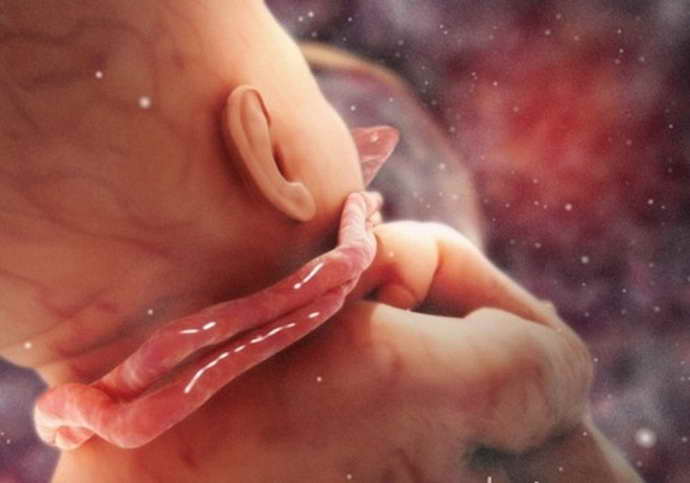
Deviations during pregnancy:
- Possibility of miscarriage.
- Placental disorders.
- Umbilical cord entwined around the neck.
- Premature birth, or carrying a child longer than expected.
- Multiple pregnancy.
- Histosis.
If a woman’s pregnancy does not go smoothly, it is important to constantly monitor the doctor and make sure that the fetus is in normal condition . In order for a newborn baby to be healthy, it is extremely important to prevent hypoxic disorders.
Deviations in the mother:
- The presence of anemia or anemia.
- Problems with the cardiovascular system.
- Diseases of bronchopulmonary type.
- The occurrence of pregnancy in a woman who is under 18 years of age or over 35 years of age.
- Pathologies of the urinary organs.
- Bad habits such as using drugs, alcohol or nicotine.
- Constant stress, poor nutrition, lack of sleep.

For this reason, it is important for a pregnant woman to monitor her health. You should also be sure to give up bad habits and reconsider your lifestyle. How correctly the fetus will develop will depend on this.
Problem childbirth:
- Entwining the fetus with the umbilical cord. This is one of the most common reasons why a child experiences shortness of breath.
- Birth injuries.
- Difficult childbirth, both for mother and child.
- The use of medications that may affect the baby's condition.
- Large fruit size.
If possible, negative factors should be eliminated so that you do not have to deal with negative consequences later. Every young woman should take care to reduce the likelihood of hypoxic changes in the baby. If it was not possible to prevent this condition, then it is worth noticing the characteristic symptoms in a timely manner.
Acute hypoxia in newborns
A few hours after birth, the baby may experience acute oxygen starvation. Often, a woman in labor cannot influence the occurrence of a hypoxic condition in the child. In some cases, incompetent health care workers are responsible for the suffocation of a newborn.
Causes of the pathological condition
The main factors that influence the formation of hypoxia in a child:
- Intrapartum , that is, occurring during childbirth. Such reasons include labor that is too long or too fast, umbilical cord prolapse (the supply of oxygen to the baby is cut off if the umbilical cord is squeezed between the birth canal and the fetus), compression of the baby’s head in the birth canal for too long, and weak labor.
- Antenatal (reasons that appear before the birth of the child). They occur if the placenta detaches prematurely or the uterus spontaneously ruptures during pregnancy. This also includes polyhydramnios and multiple pregnancies. These disorders are typical for women who are not giving birth for the first time, or who suffer from inflammation of the genital organs after an abortion.
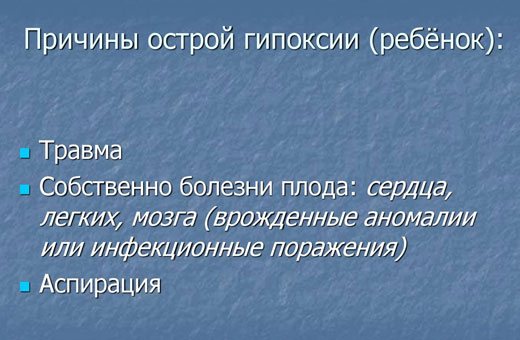
Early contact with a specialist will help reduce the risk of complications of hypoxia.
Signs
Lightning hypoxia occurs rapidly, and within a few minutes the child dies. An acute lack of oxygen occurs a couple of hours after the baby is born.
During the specified period of time, the patient exhibits the following symptoms:
- shortness of breath, trouble breathing;
- slow heartbeat;
- low blood pressure;
- a state of coma accompanied by the death of the baby (if the child is not given first aid).
Diagnostics
Acute fetal hypoxia can be detected using an obstetric stethoscope (irregularities in heart rhythm, too frequent or infrequent heart contractions, poor audibility of heart sounds). Phono- and electrocardiography, which will help assess the functioning of the child’s heart. They are used to confirm the results obtained.
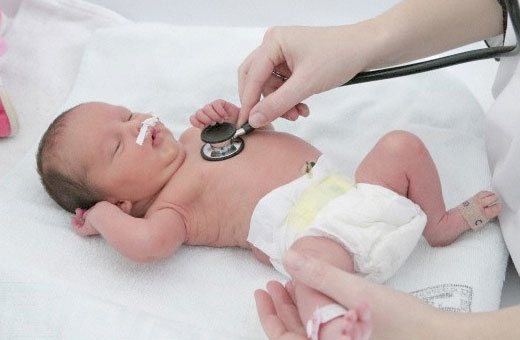
An ultrasound will record disturbances in the motor functions of the embryo (it should make approximately 5 movements in half an hour), as well as changes in breathing rate. Hypoxia of the newborn is indicated by turbid amniotic fluid having a green color.
They may contain particles of meconium (the baby's first stool).
Treatment methods
The consequences of hypoxia in a newborn require mandatory treatment. If acute oxygen starvation is detected, the expectant mother must be hospitalized immediately. Doctors prescribe taking ascorbic acid, glucose, and inhaling oxygen-air mixtures.
Medicines are also prescribed that have a positive effect on the respiratory system of a pregnant woman. Considering the causes of hypoxia, in some cases caesarean section and the use of obstetric forceps are recommended.
Treatment of infantile hypoxia should begin as soon as possible. If a newborn has swallowed amniotic fluid, the newborn's airway must be cleared using special equipment. To restore breathing, an oxygen mask is put on the child.
A mild type of oxygen starvation does not require serious treatment. Therapeutic exercises, physical procedures, and massage are prescribed.
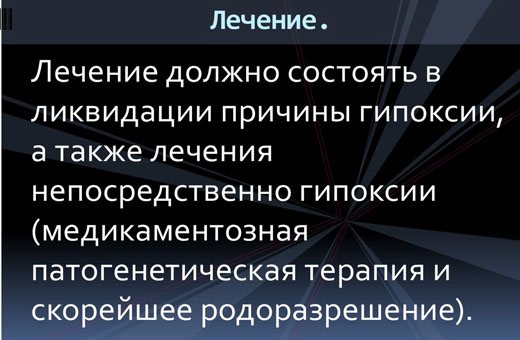
Moderate hypoxia requires taking medications that improve blood circulation in the brain. In severe cases of the disease, the baby is sent to the intensive care unit. In case of cerebral edema, urinary medications are prescribed. Anticonvulsant medications will help relax the muscles and also relieve the child from seizures.
Posthypoxic changes
Often post-hypoxic changes provoke developmental delays in children. The baby's weight stays the same. Such children begin to speak their first words later than their peers, and they suffer from neurological diseases. Often oxygen starvation is the cause of mental disorders.
Treatment of hypoxic changes in a newborn
Therapy begins immediately after hypoxia is detected. This is a serious and important postpartum stage, since it is at this time that the future development of the child is decided. The treatment is complex, and often the child has to be sent to intensive care. It is not difficult to cure moderate hypoxia.
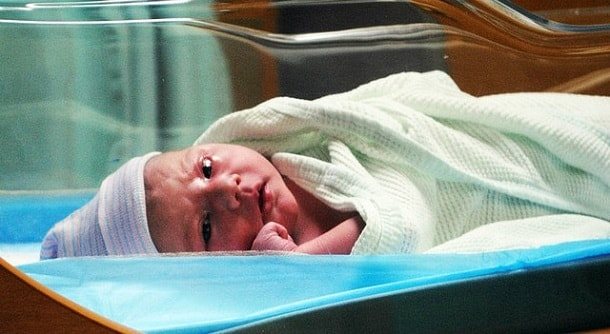
Restoring normal breathing
First, the airways are cleared and amniotic fluid is removed. If there is no breathing, resuscitation is resorted to. Artificial ventilation “breathes for the child” if he cannot maintain breathing himself.
With the right manipulations in adulthood and even preschool age, there will be no consequences.
Drug use
To enhance metabolic processes in the lungs and dilate the bronchi, they resort to medications. They also stimulate brain activity and improve blood circulation. The specialist decides what to treat.
Warming the baby
Heat dilates blood vessels, which helps blood circulation return to normal and relieve spasms. This procedure also aims to restore damaged tissue. Therefore, babies are given massage and protected from the cold.
Oxygen mask
Immediately after the manipulations to restore breathing, the baby is put on an oxygen mask. It saturates tissues with necessary oxygen, reducing the risk of oxygen starvation.
Forecast
Timely treatment of chronic lack of oxygen, gestation of the fetus under normal conditions, as well as a successful birth process will make a favorable prognosis in the future. The consequences of acute hypoxia depend on the factors of occurrence, timing of disease progression and regular use of medications.
The consequences of a lack of oxygen are fraught with dangerous complications for the newborn. To avoid hypoxia in a baby, a pregnant woman needs to spend more time in the fresh air, undergo medical examinations on time, and carefully choose a gynecologist.
Author: Ekaterina Pisarenko
Article design: E. Chaikina
